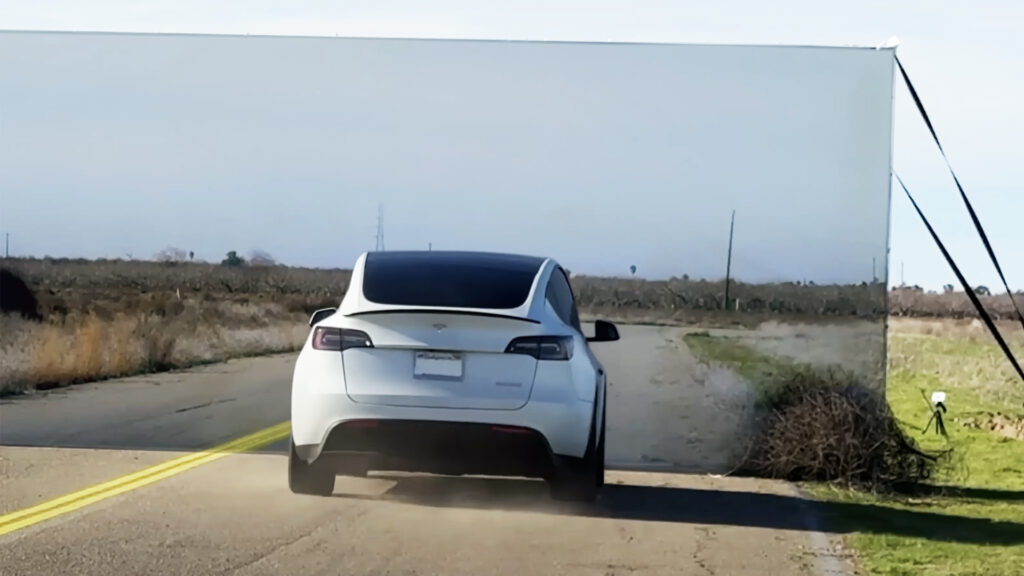The debate over the effectiveness of electronic driving aids in achieving full autonomy continues, as YouTuber Mark Rober recently put his Tesla Model Y’s Autopilot technology to the test in a unique experiment. Setting up a Looney Toons-style trap, Rober constructed a styrofoam wall with a picture of a road on it in the middle of an actual road to see how the system would react. This test aimed to highlight the differences between camera-based systems like Autopilot and lidar-equipped vehicles.
In the experiment, Rober pitted his Model Y against a Lexus RX-based prototype fitted with lidar technology. While Autopilot successfully passed the initial tests of stopping for mannequins in the road, it failed to detect the mannequin in fog and rain conditions. In contrast, the lidar-equipped Lexus was able to detect the obstacles regardless of the weather conditions, showcasing the advantages of lidar technology in adverse situations.
The most intriguing part of the experiment was inspired by the iconic Wile E. Coyote versus Road Runner cartoons. A wall was placed across the road, blending in seamlessly with the surroundings. The lidar-equipped Lexus was able to detect the wall and come to a stop, while the Model Y, relying on cameras, failed to recognize the obstacle and crashed through the wall at 40 mph. This highlighted a key difference between the two technologies – lidar actively scans the road ahead, while cameras rely solely on visual input.
While the likelihood of encountering a wall that resembles a road in real-world driving scenarios may be low, the test effectively demonstrated the limitations of camera-based systems like Autopilot. It also emphasized that Autopilot, despite its advanced features, does not make a car fully autonomous. As a Level 2 system, it still requires the driver to remain attentive and in control at all times.
Elon Musk’s criticism of lidar as a “crutch” may be reevaluated in light of these results, as videos showcasing the limitations of camera-based electronic driving aids continue to surface. The importance of incorporating lidar technology for enhanced safety and reliability in autonomous driving systems is becoming increasingly evident. Overall, the experiment conducted by Mark Rober serves as a valuable reminder of the capabilities and limitations of different autonomous driving technologies in real-world scenarios.

